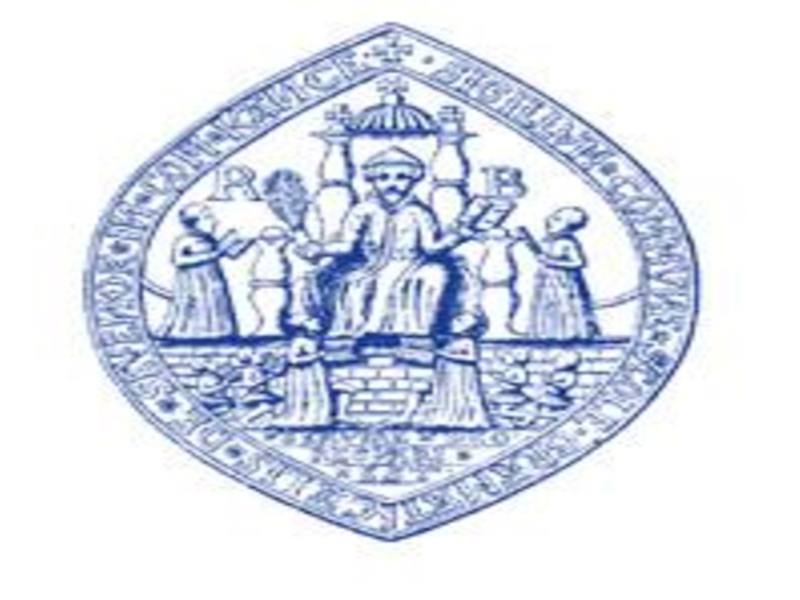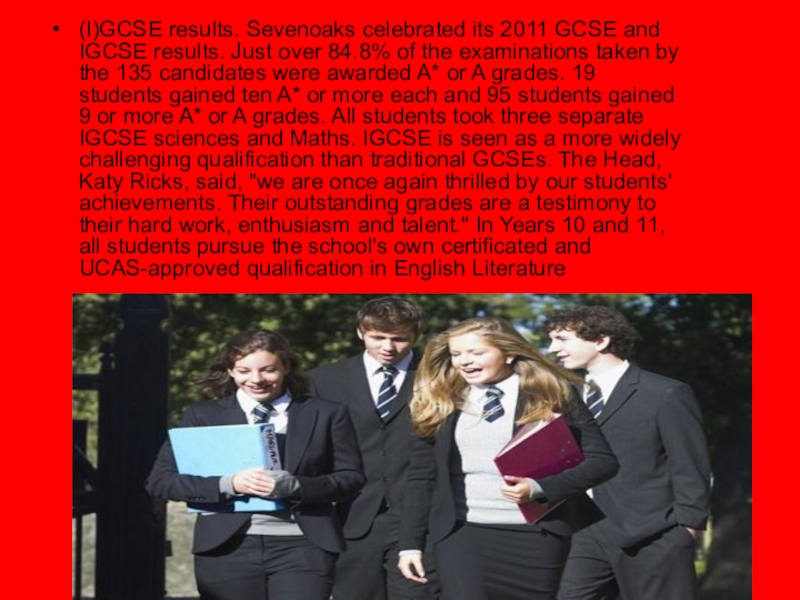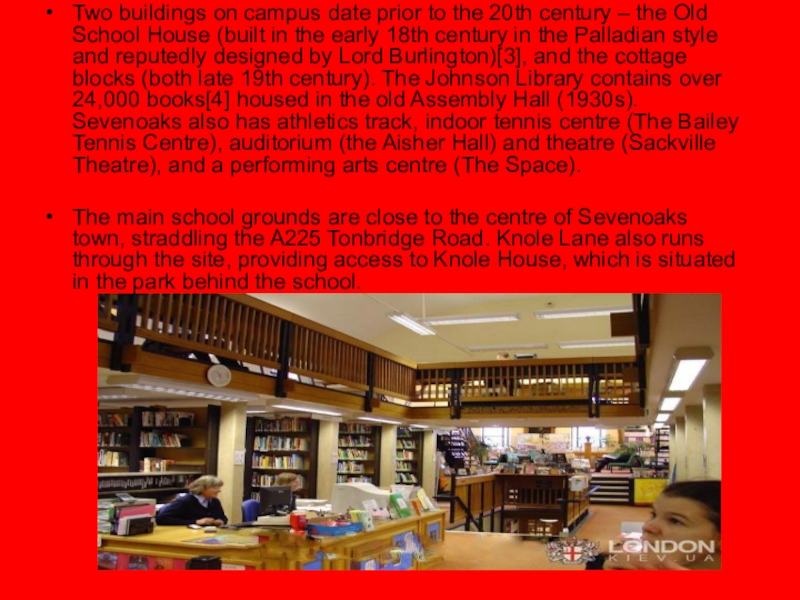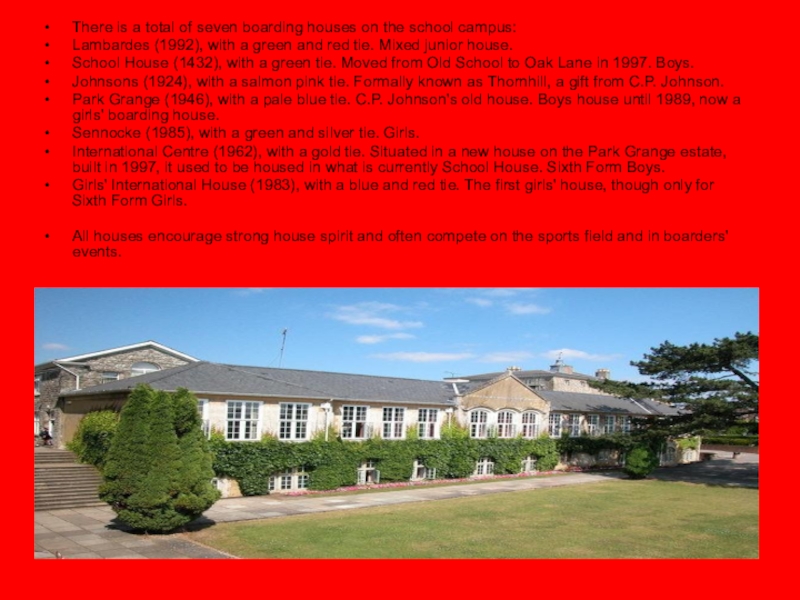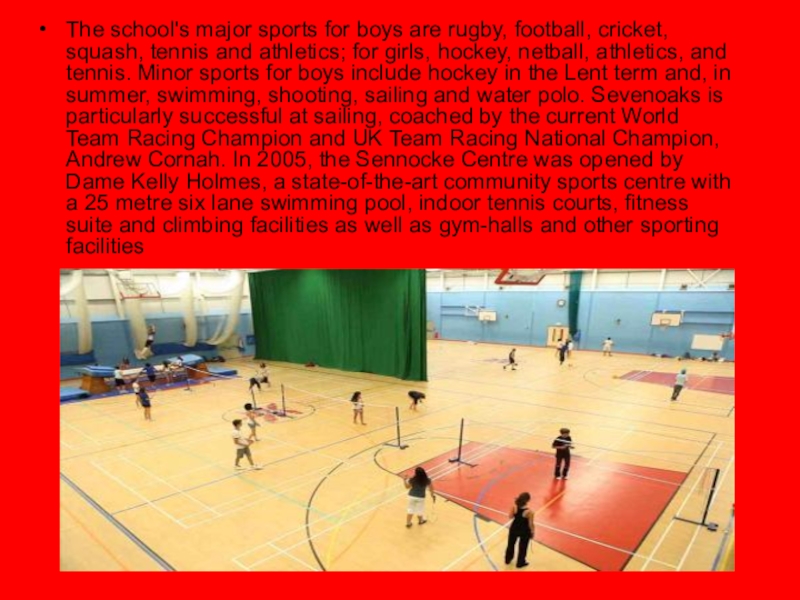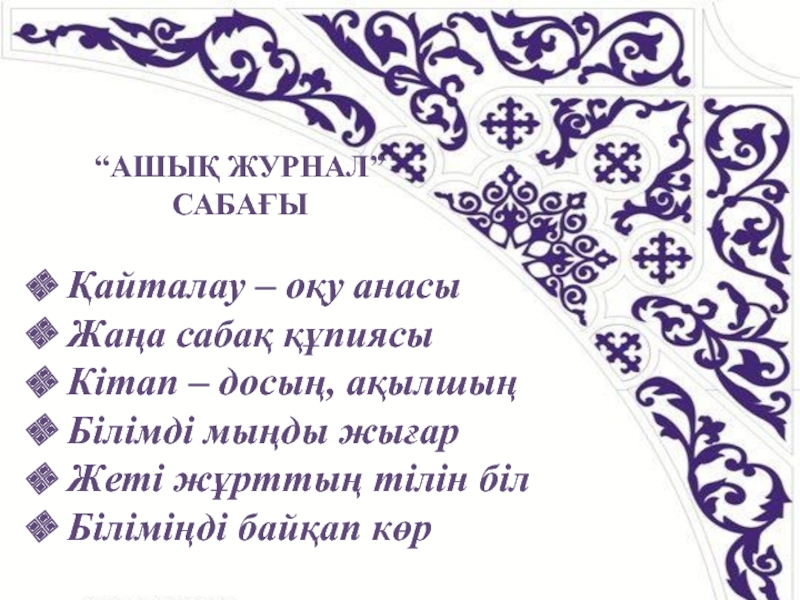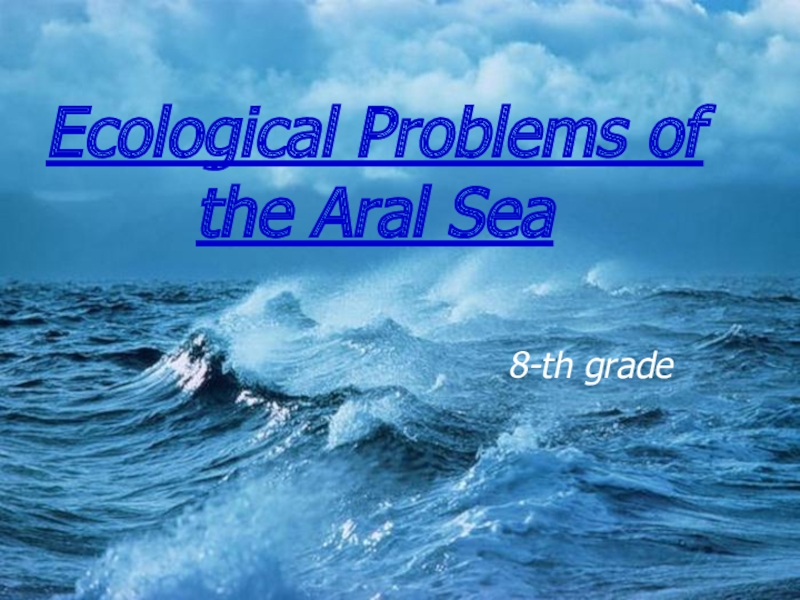the town of Sevenoaks, Kent. It is the third oldest non-denominational school in the United Kingdom, dating back to 1432, behind Winchester (1382) and Oswestry (1407). Over 1,000 day pupils and boarders attend, ranging in age from 11 to 18 years. There are approximately equal numbers of boys and girls. The current Headteacher is Katy Ricks. The school was a pioneer in attracting international students during the 1960s. Today the pupils come from over 40 countries.
- Главная
- Разное
- Образование
- Спорт
- Естествознание
- Природоведение
- Религиоведение
- Французский язык
- Черчение
- Английский язык
- Астрономия
- Алгебра
- Биология
- География
- Геометрия
- Детские презентации
- Информатика
- История
- Литература
- Математика
- Музыка
- МХК
- Немецкий язык
- ОБЖ
- Обществознание
- Окружающий мир
- Педагогика
- Русский язык
- Технология
- Физика
- Философия
- Химия
- Шаблоны, фоны, картинки для презентаций
- Экология
- Экономика
Презентация, доклад на английском языке Sevenoaks school
Содержание
- 1. Презентация на английском языке Sevenoaks school
- 2. Слайд 2
- 3. (I)GCSE results. Sevenoaks celebrated its 2011 GCSE
- 4. Two buildings on campus date prior to
- 5. There is a total of seven boarding
- 6. The school's major sports for boys are
- 7. Founded in 1432 by William Sevenoke as
- 8. The school was housed in small buildings
(I)GCSE results. Sevenoaks celebrated its 2011 GCSE and IGCSE results. Just over 84.8% of the examinations taken by the 135 candidates were awarded A* or A grades. 19 students gained ten A* or more each and
Слайд 3(I)GCSE results. Sevenoaks celebrated its 2011 GCSE and IGCSE results. Just
over 84.8% of the examinations taken by the 135 candidates were awarded A* or A grades. 19 students gained ten A* or more each and 95 students gained 9 or more A* or A grades. All students took three separate IGCSE sciences and Maths. IGCSE is seen as a more widely challenging qualification than traditional GCSEs. The Head, Katy Ricks, said, "we are once again thrilled by our students' achievements. Their outstanding grades are a testimony to their hard work, enthusiasm and talent." In Years 10 and 11, all students pursue the school's own certificated and UCAS-approved qualification in English Literature
Слайд 4Two buildings on campus date prior to the 20th century –
the Old School House (built in the early 18th century in the Palladian style and reputedly designed by Lord Burlington)[3], and the cottage blocks (both late 19th century). The Johnson Library contains over 24,000 books[4] housed in the old Assembly Hall (1930s). Sevenoaks also has athletics track, indoor tennis centre (The Bailey Tennis Centre), auditorium (the Aisher Hall) and theatre (Sackville Theatre), and a performing arts centre (The Space).
The main school grounds are close to the centre of Sevenoaks town, straddling the A225 Tonbridge Road. Knole Lane also runs through the site, providing access to Knole House, which is situated in the park behind the school.
The main school grounds are close to the centre of Sevenoaks town, straddling the A225 Tonbridge Road. Knole Lane also runs through the site, providing access to Knole House, which is situated in the park behind the school.
Слайд 5There is a total of seven boarding houses on the school
campus:
Lambardes (1992), with a green and red tie. Mixed junior house.
School House (1432), with a green tie. Moved from Old School to Oak Lane in 1997. Boys.
Johnsons (1924), with a salmon pink tie. Formally known as Thornhill, a gift from C.P. Johnson.
Park Grange (1946), with a pale blue tie. C.P. Johnson's old house. Boys house until 1989, now a girls' boarding house.
Sennocke (1985), with a green and silver tie. Girls.
International Centre (1962), with a gold tie. Situated in a new house on the Park Grange estate, built in 1997, it used to be housed in what is currently School House. Sixth Form Boys.
Girls' International House (1983), with a blue and red tie. The first girls' house, though only for Sixth Form Girls.
All houses encourage strong house spirit and often compete on the sports field and in boarders' events.
Lambardes (1992), with a green and red tie. Mixed junior house.
School House (1432), with a green tie. Moved from Old School to Oak Lane in 1997. Boys.
Johnsons (1924), with a salmon pink tie. Formally known as Thornhill, a gift from C.P. Johnson.
Park Grange (1946), with a pale blue tie. C.P. Johnson's old house. Boys house until 1989, now a girls' boarding house.
Sennocke (1985), with a green and silver tie. Girls.
International Centre (1962), with a gold tie. Situated in a new house on the Park Grange estate, built in 1997, it used to be housed in what is currently School House. Sixth Form Boys.
Girls' International House (1983), with a blue and red tie. The first girls' house, though only for Sixth Form Girls.
All houses encourage strong house spirit and often compete on the sports field and in boarders' events.
Слайд 6The school's major sports for boys are rugby, football, cricket, squash,
tennis and athletics; for girls, hockey, netball, athletics, and tennis. Minor sports for boys include hockey in the Lent term and, in summer, swimming, shooting, sailing and water polo. Sevenoaks is particularly successful at sailing, coached by the current World Team Racing Champion and UK Team Racing National Champion, Andrew Cornah. In 2005, the Sennocke Centre was opened by Dame Kelly Holmes, a state-of-the-art community sports centre with a 25 metre six lane swimming pool, indoor tennis courts, fitness suite and climbing facilities as well as gym-halls and other sporting facilities
Слайд 7Founded in 1432 by William Sevenoke as a part of his
last will and testament, the school was intended to give a classical education to boys from the town, free of church constrictions. Sevenoke's will also provided for almshouses for poor men and women[9]. Sevenoaks School is one of the oldest lay foundations in England. Sevenoke was Mayor of London and, as a friend of Henry V, may have been influenced by the MP for Shropshire and King's pleader, David Holbache, who founded Oswestry in 1407. According to William Lambarde and Richard Johnson (Nine Worthies of London), Sevenoke was a foundling, whose decision to establish the school and almshouses may have been inspired by his early history.
Слайд 8The school was housed in small buildings around the town (even
outside the town in the 1730s) until a permanent schoolhouse was built in 1730 to the designs of Lord Burlington, a friend of the headmaster of the time, Elijah Fenton.
The school remained small until the late 19th century. At one stage, under the headmastership of the Revd Simpson, the school housed only four boys.
In 1884 the governors appointed James Birkett as headmaster. It was Birkett's vision to elevate the school's status to that of a First Grade Classical School. He started this revolution, reducing the number of free places to the townfolk and expanding boarding. When he resigned in the 1890s the school had over 100 boys. Birkett's revolution was continued by George Heslop who increased the size to a peak of 134 boys and then by G.A. Garrod.
In 1919 the headmaster's wife, Mrs Garrod, started a new school for younger boys; Sevenoaks Prep School started with six pupils in the school "Cottage Block".
The school remained small until the late 19th century. At one stage, under the headmastership of the Revd Simpson, the school housed only four boys.
In 1884 the governors appointed James Birkett as headmaster. It was Birkett's vision to elevate the school's status to that of a First Grade Classical School. He started this revolution, reducing the number of free places to the townfolk and expanding boarding. When he resigned in the 1890s the school had over 100 boys. Birkett's revolution was continued by George Heslop who increased the size to a peak of 134 boys and then by G.A. Garrod.
In 1919 the headmaster's wife, Mrs Garrod, started a new school for younger boys; Sevenoaks Prep School started with six pupils in the school "Cottage Block".

